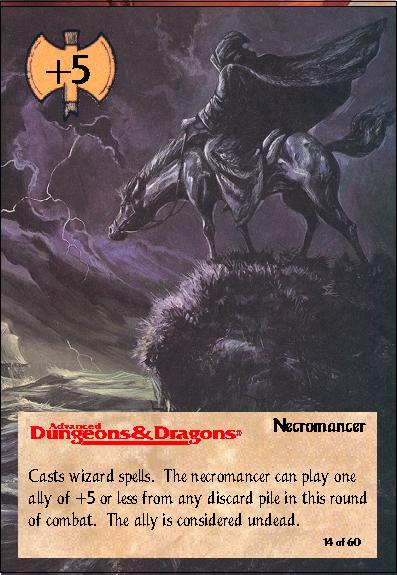THE
NECROMANCER
by
Leomund
THE
NECROMANCER
by
Leomund
-
Leomund's Tiny Hut
by Lenard Lakofka
For NPCs only: The death
master
A magick-using "monster" to play against,
not as
I N T R O D U C T I O N / S E R M O N
On the theme of the AD&D
Game
As corny as it may sound, I believe the
t h e m e o f
t h e A D V A N C E D
D U N G E O N S & DRAGONS® game system is the strugg l
e b e t w e e n g o o d a n d
e v i l .
I t i s a
c o m m i t m e n t t o t e a m a c
t i o n o v e r i n d i v i d u a l
p l a y . T o o
o f t e n , a n A D & D
a d v e n t u r e o r
campaign is played as a "me first" game.
T h i s i s q
u i c k l y s e e n w h e n t h e
p a r t y t r i e s
to divide treasure, or the thief says
that he
i s " r o l e
p l a y i n g " w h e n h e k e e p
s t h e b i g gest gem for himself.
A well-played AD&D campaign,
in
which the party becomes stronger as Time
goes on, in which material is divided
by
j u d g i n g w h o
i n t h e p a r t y c a n
u s e i t b e s t ,
i n w h i c h
a c t i o n a n d d e c i s i o n i
s s h a r e d b y
the group and not performed by the
The AD&D game should not have
assassin
PCs.
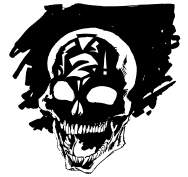
I n f a c t , n
o
? c a l l e r , ? i s
u n f o r t u n a t e l y n o t s e e n
t o o
o f t e n . A l a s ,
t h i s i s a n o p p o r t u n i t
y m i s s e d .
A PC s h o u l d <NOT>
b e e v i l a t a l l
unless adverse magic affects him. Yet,
many players will have their characters
t u r n ? e v i l ?
a t t h e f i r s t o p p o r t u n
i t y , w i t h
greed being the biggest single cause of
t h i s c h a n g e .
I n a s i t u a t i o n I
e x p e r i e n c e d ,
t h e p a l a d i n
i n a g r o u p t r i e d
t o t a l k t h e
r a n g e r i n t o
k n i f i n g t h e m a g i c - u s e r
i n t h e
back because the magic-user wanted the
recently found (and yet to be identified)
w a n d . P l a y e r s
w i l l c h a n g e t h e i r c h a
r a c t e r s ? a l i g n m e n t s a t
t h e d r o p o f a h a
t , a n d
H o w e v e r , I
d o n o t w a n t t o b
e l a b o r t h e
POINT . A s a
w a y o f p u t t i n g e v i l
i n i t s
o f t e n w i t h o u t
e n o u g h o f a p e n a l t y
proper place, here is presented an evil
c h a r a c t e r t h a t
m a k e s a n a s s a s s i n l o o
k l i k e
t h e b o y n e
x t d o o r . T h e d e a t h
m a s t e r i s
m e a n t a s a
NPC -- o n e
the PCs and their party have
t o d e f e a t .
Please use the character that
way only. If I ever run into a PC death
master at a convention, I
may turn evil myself. . . .
i n f l i c t e d b y t h e DM.
______________________________________
The death master is a sub-class of
magic-user.
He will be ultimately CE, although his early alignment might
even be LG. The death master
will change alignment, moving one step
closer to chaotic evil (if he isn?t there
already) upon the gaining of every two
levels of experience. Goodness is lost
first,
and then lawfulness. Thus, a death master
who starts out as lawful good will
turn lawful neutral upon attaining 3rd
level, true neutral at 5th level, neutral
evil
at 7th level, and chaotic evil at 9th
level.
In any event, a death master will be chaotic
evil by the time he reaches 9th level,
and in most cases the switch will not
take
that long. In this downward spiral, no
magic ? even a wish or a
helm of opposite alignment ? can move the death
master?s alignment in the direction away
from chaotic evil.
The ability score requirements for this
<NPC> are as follows:
strength of at least 9, intelligence at
least
15, wisdom always less than 13, dexterity
at least 12, constitution of 14 or better,
and charisma always below 8.
<
STR
INT = 9 dice
WIS =
DEX
CON = 8 dice
CHA =
COM =
PER
Finish Method VI data.
Method VI is like Method V, but it uses
1 less die for each ability score.
TO discourage PC Necromancers (Death Masters),
subtract 1 more die for each ability score
>
A death master can be a human, dwarf,
or half-orc, and members of any of those
races can advance to 13th level. No death
master can ever be multi-classed or
double-classed. The death master has
some of the abilities of an alchemist,
since many of his magics involve the
preparation of potions, salves, fluids,
creams, and other sorts of mixtures.
THE DEATH MASTER
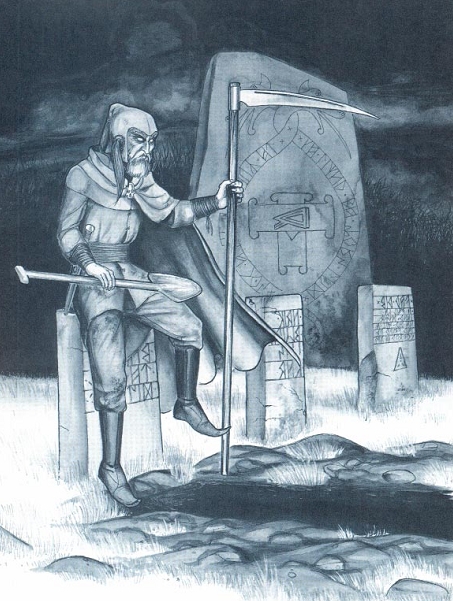
(This chart is for reference only; the
death master can never be anything but a non-player character.)
| Experience
points |
Level | 4-sided dice for
accumulated hit points |
Level title | 1 | 2 | 3 | 4 | 5 | 6 |
| 0 -- 1,333 | 1 | 1 + 1 | Grave Robber | - | - | - | - | - | - |
| 1,334 -- 2,666 | 2 | 2 + 2 | Tomb Haunter | - | - | - | - | - | - |
| 2,667 -- 5,333 | 3 | 3 + 3 | Necropolite | - | - | - | - | - | - |
| 5,334 -- 13,333 | 4 | 4 + 4 | Skeleton Master | 1 | - | - | - | - | - |
| 13,334 -- 26,667 | 5 | 5 + 5 | Zombie Master | 2 | - | - | - | - | - |
| 26,667 -- 53,333 | 6 | 6 + 6 | Ghoul Master | 2 | 1 | - | - | - | - |
| 53,334 -- 113,333 | 7 | 7 + 7 | GhastMaster | 2 | 1 | 1 | - | - | - |
| 113,334 -- 233,333 | 8 | 8 + 8 | Shadow Master | 2 | 2 | 1 | 1 | - | - |
| 233,334 -- 466,667 | 9 | 9 + 9 | Necromancer | 2 | 2 | 2 | 2 | - | - |
| 466,668 -- 933,333 | 10 | 10 + 10 | Mummy Master | 3 | 3 | 3 | 2 | - | - |
| 933,334 -- 1,877,777 | 11 | 11 + 11 | Ghost Master | 3 | 3 | 3 | 3 | 1 | - |
| 1,877,778 -- 3,333,333 | 12 | 12 + 12 | Lich Master | 4 | 4 | 3 | 3 | 2 | - |
| 3,333,334 + | 13 | 13 + 13 | Death Master | 4 | 4 | 4 | 4 | 3 | 1 |
+ = These spells will be marked with +1,
+2, or +3 to signify the effective bonus in intelligence points the death
master gains when trying to learn that particular spell.
# = Those spells that require some manufactured
material (a salve, potion, cream, fluid, paste, etc.) are marked with a
pound sign ("#").
* = Those that are new or have a different
description from that found in the official rules are marked with an asterisk
("*").
Death masters can learn and use only
the knife, dagger, sickle, scythe, and/or
scimitar ? even to save their lives they
will not pick up another weapon. Death
masters can use magical weapons of the
eligible types, with the exception of
a
flame tongue scimitar, which is
prohibited. If a death master picks up an aligned
weapon that he cannot use, he will take
double ego damage unless the weapon?s
alignment is more evil and/or chaotic
than the death master?s current alignment.
In the latter case, the death master
will instantly convert to the new alignment.
For example, if a neutral 3rd level
death master picked up an evil neutral
scimitar, he would take no damage but
would become evil neutral at once. If,
on
the other hand, the scimitar were lawful
good, he or she would take double ego
damage.
Notes on new weapon types: The sickle
weighs approximately 15 gp, length 15-18
inches, space required 2 feet, speed factor
3, damage vs. S or M opponents 3-6, vs.
L
opponents 1-3, vs. armor as a short sword
would be rated. The scythe weighs
approximately 140 gp, length about 5
feet, space required 5 feet, speed factor
8,
damage vs. S or M opponents 2-9, vs. L
opponents 1-6, vs. armor as a bardiche.
Death masters shun armor of all types
but may use rings, cloaks and jewelry
of
p r o t e c t i o n , i n
c l u d i n g bracers of defense.
Death masters may employ all potions,
e x c e p t f o r
t h o s e t h a t c o n t r o l l i
v i n g
t h i n g s , t h o s e
t h a t c a n o n l y b e
u s e d b y
fighters, those that are made for scrying,
a n d t h o s e
t h a t h e a l . T h e y c a n n o
t u s e
s c r o l l s , e x c e p
t f o r t h o s e p e n n e d
i n t h e
Language of Death or those that
control
or protect from the undead. Such scrolls
bypass the need, if any, for salves, creams,
fluids, etc., that would otherwise produce
the same effect.
Rings usable by death masters are:
feather fall, fire resistance, free action,
invisibility, protection, regeneration
(see
below), spell turning, warmth
and X-ray
vision. All other rings will not
function
on them unless they somehow affect the
undead.
A ring of regeneration, when
placed on a death master of 9th level
or
higher, will instantly become invisible.
Further, it will become non-corporeal
when functioning one round after the
death master dies. Cutting off the death
master's head, or the hand bearing the
ring, will stop the regeneration process.
Death masters may use a staff of
withering and wands of fear, magic detection,
negation and paralyzation.
A few miscellaneous magic items can be used, including: alchemy jug,
amulet of life protection, amulet of the planes (usable by
them only to go to the lower planes of
Pandemonium, the
Abyss and Tarterus
plus the Negative Material plane),
beaker
of plentiful potions, brooch of shielding,
cloak of protection, cube of force, cubic
gate, dust of all types, helm
of comprehending languages, Keoghtom?s ointment, Nolzur?s marvelous pigments,
all
phylacteries, all scarabs,
and a sphere of
annihilation. Additionally, they
may use
some items specific to their profession.
These items are detailed later in this
article.
The death master begins to learn specific
alchemist-like skills at 3rd level and
certain specific spells at 4th level.
His
teacher is always another death master.
The death master must start up his own
laboratory for a cost of 400 gp, and new
equipment for the lab must be purchased
at each level for an additional 400 gp.
Costs for a specific raw material are
separate from these laboratory costs.
Most
spell-like effects use special preparations
that must be made in advance.
Special abilities
The death master has the following
special powers and abilities, some of
which are constant and some of which are
gained/lost as he advances in levels:
1. 1st-level death masters obtain one
XP of experience for each
grave they dig, and 2 XP
for every stolen body. This award does
not apply beyond 1st level.
2. 2nd-level death masters obtain
2 XP for every body laid
to rest. At other levels there is no experience
award for this action.
3. 3rd-level death masters obtain
3 experience points for every properly
embalmed body. This award is unique to
this level only.
4. All death masters can identify a
potion
of undead control by tasting just a
drop. Such a potion has double effect
and
double duration when imbibed by a death
master.
5. An undead creature must fail a saving
throw of 8 to successfully attack a
death master. If the death master attacks
the undead, of course, this ?partial
immunity? is overturned. Thus, undead
may attack a group of characters and a
death master will be allowed to walk
away unharmed even if a lich or a vampire
is the attacker or among them.
6. At 4th level and above, the death
master can speak with undead
at will.
This does not create a compulsion to
obey and cannot operate on mindless
undead.
7. At seventh level the death master
can speak with dead as a cleric
of the
same level without use of a spell. This
power is usable once per day and only
once on the same corpse.
8. The death master gains a cumulative
5% resistance to sleep and
charm
spells for each of his or her levels.
If a
saving throw is allowed, the death master
is entitled to it if his magic resistance
does not overcome the sleep or charm
p o w e r / s p e l l .
9. At 9th level and above the death
m a s t e r i s
i m m u n e t o paralysis and hold
spells, including the touch of the undead.
10. At 11th level and above the death
master is immune to level draining and
strength draining by the undead, though
normal damage from such an attack
would still occur.
D e a t h m a s t e r s
p e l l s
All spells of the death master must be
learned just as a magic-user learns
spells,
but some spells given in the list that
follows are the heart of his profession. These
spells will be marked with +1, +2 or +3
to
signify the effective bonus in intelligence
points the death master gains when trying
to learn that particular spell. Those
spells that require some manufactured
material (a salve, potion, cream, fluid,
paste, etc.) are marked with a "#" sign.
Those that are new or have a different
description from that found in the official
rules are marked with an asterisk ("*").
| First level | Second level | Third level | Fourth level | Fifth level | Sixth level |
| 1. Animate skeletons *(+3)# | 1. Attract ghouls * | 1. Dispel magic | 1. Charm undead *(+3) | 1. Animate dead | 1. Death spell |
| 2. Animate zombies *(+3)# | 2. Darkness 15' r. | 2. Feign death (+2) | 2. Dig | 2. Cloudkill | 2. Energy drain |
| 3. Cause light wounds * # | 3. Detect good/evil | 3. Monster summoning I * | 3. Fear | 3. Cause serious wounds * # | 3. Harm/heal |
| 4. Comprehend languages | 4. Death armor *(+2) | 4. Protection good/evil 10' r. | 4. Ice storm | 4. Cone of cold | 4. Lichdom *(+1)# |
| 5. Detect magic | 5. Find familiar *# | 5. Ghast production *(+2)# | 5. Mummy production *(+1)# | 5. Finger of death | 5. Undead production *(+2)# |
| 6. Feather fall | 6. Invisibility | 6. Ray of paralysis *(+1) | 6. Shadow summoning *(+1) | 6. Ghost production * | 6. Vampire production *(+1)# |
| 7. Identify (+1) | 7. Knock | 7. Tongues | 7. Wight production *(+2) | 7. Hold undead *(+2) | - |
| 8. Plant death *(+2)# | 8. Magic mouth | 8. Wall of ice | 8. Wraith production *(+1) | 8. Teleport | - |
| 9. Preserve | 9. Pyrotechnics | - | - | - | - |
| 10. Protection from good | 10. Ray of enfeeblement | - | - | - | - |
| 11. Read magic | 11. Stinking cloud | - | - | - | - |
| 12. Scare | 12. Wizard lock | - | - | - | - |
| 13. Shield | - | - | - | - | - |
| 14. Unseen servant | - | - | - | - | - |
| 15. Wizard mark | - | - | - | - | - |
| 16. Write # | - | - | - | - | - |
Notes:
All spells of a death master are defined,
for the purpose of range, duration, and
area of effect, as if the character were
three levels lower than his actual level. Thus,
a fourth-level death master casts spells
as a first-level magic-user or cleric.
Unless otherwise noted, a death master
spell takes 1 segment per spell level to
cast, even if the normal spell text for
a cleric or magic-user may be faster or slower.
S p e l ln o t e s / d e s c r i p t i o n s :
First level
Animate
skeletons
is simply an animate
dead spell that produces one skeleton
for
every level of the death master. The death
master must prepare a special salve to
rub
on the bones to make the skeleton receptive.
This takes one round per skeleton.
The magic to animate them then takes
only a segment to cast. The rubbed skeletons
can be so animated anytime within
24 hours after their rubdown. The salve
costs 10 gp per skeleton. Spell range
is 30
feet plus 10 feet per effective level
of the
death master.
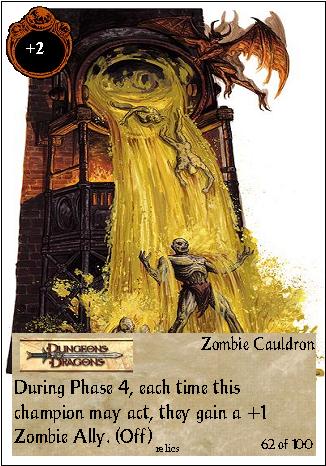
Animate
zombies
is simply an animate
dead spell that produces one zombie
for
every effective level of the death master.
The corpse must be immersed in a bath
of
special salts for 1 full turn prior to
spell
casting. Such a bath can soak ten corpses
for a cost of 200 gp. The corpses then
so
soaked can be animated in two segments
at a range of 50 feet plus 10 feet per
effective level of the death master.
Cause
light wounds will inflict 2-8 hit
points of damage if a successful touch
is
made on a victim?s bare skin. The death
master must use a paste rubbed on his
hands to activate the magic. A word of
command then makes his hands into
weapons for three rounds or until a touch
h a s o c c u r r e d .
T h e c o s t o f t h e
p a s t e i s 7 5
g p f o r e n
o u g h t o m a k e t h r e e
a p p l i c a t i o n s . S m e a r i n g t h e
p a s t e , a s s u m i n g i t i s
available, takes only a segment.
Plant death
requires a fine mist spray
be applied to the plant(s) to be killed.
A
potion-sized bottle would cost 200 gp
and
could cover 2,000 square feet. Then, upon
the utterance of a word of command, the
plants within 100 feet of the death master
will die. Trees are allowed a saving throw
of 11. Living mobile plants (such as treants)
are allowed that saving throw plus
another as a monster of the appropriate
number of hit dice. Once killed, the
plants wither and rot rapidly, and no
new
plants will grow in the area for a year.
Second level
Attract
ghoul
is similar to a find familiar spell, using the same ingredients,
but
the ghoul that comes is not willing to
serve unless it is fed regularly. ?Loyalty?
and obedience is gained at 1%/day of feeding
and attention. A safe lair must always
be provided.
Death
armor is produced by pouring
a
cream on the body and rubbing it in.
This rubbing takes two full rounds.
Then, anytime within the next hour per
effective level of the death master, the
speaking of a command sentence will
activate the armor coating. Anyone
touching the death master with exposed
flesh (perhaps to cast a spell or as a
monk
with an open hand attack) must save vs.
spell or take 2-12 hit points of damage.
The armor is effective for 1 round per
actual level of the death master.
Multiple
touches will still harm the attacker.
Note:
The spell is defensive only, and the death
master gains nothing by trying to touch
someone though he or she can position
him or herself so that he or she must
be
touched to get by. Naturally, if a weapon
hit occurs the death master takes normal
damage with no damage to the attacker.
Death armor will harm undead. Any
damage from the monk's open hand
attack or a claw/bite attack will still
be
scored, of course.
Find
familiar uses the same ingredients
as for a magic-user, but the cost is
doubled. The death master uses the following
table (roll d20) for find familiar:
1-4, black cat; 5-8, weasel; 9, imp; 10,
ghast; 11, mephit; 12, ghoul; 13-20, no
reply but try again in one month. If an
imp, ghast, ghoul, or mephit appears it
does not add any hit points to the death
master. If it is eliminated, however,
the
death master will lose 2-7 hit points
permanently.
Third level
Monster
summoning I will attract
nearby skeletons
and zombies not already
animated or controlled by the death master.
From 2-7 will arrive even if they must
abandon a place they were ordered to
guard. They will arrive via teleportation
in 1-4 rounds and will fight till destroyed.
If not destroyed they will teleport back
when the spell duration of 5-20 rounds
runs out.
Ghast
production requires a ghoul
to
be at hand. The death master may animate
only one ghast per spell. The body
must be infused with a special liquid
that
costs 400 gp to produce. The process takes
1 hour to prepare the body and 1 turn
to
cast the spell. Such ghasts cannot ?procreate?
themselves but are like ghasts in
every other way. Someone killed by one
of
these ghasts has a minus 1% to the chance
to be raised from the dead for each hour
the figure is dead. Thus, after 70 hours
a
victim with a constitution of 13 would
have only a 20% chance to be successfully
raised. If raised, however, subsequent
raises would be allowed at the figure?s
full constitution score. Note: Magics
like
remove curse, limited wish, etc.
can
remove the onus on such a corpse so that
raising is normal.
Ray of
paralysis takes only one segment
to activate and is a chief attack/defense
spell for a death master. The ray is
pencil-thin and has a length of 60 feet
plus 10 feet per level of the death master.
When it is fired at a living figure, that
figure is allowed a double saving throw.
The first is vs. spell to see if the ray
hits at
all. If the saving throw is made, the
ray
misses but those in direct line behind
or
near the victim (especially those in nearby
m e l e e ) m i g h t
t h e n b e s t r u c k . I f
t h e r a y
does hit, the victim saves vs. paralysis
at
-- 2 . I f t h
i s t h r o w f a i l s , t h e
v i c t i m is paralyzed for 3d12 rounds.
F o u r t h l e v e l
C h a r m
u n d e a d will work only on those
undead having intelligence of 9 or
higher. The undead (only one target)
must make a saving throw at -3 or obey
the death master and perform some mission
for him. The undead will not openly
expose itself to destruction (a vampire
would not go into open sunlight), and
such an obvious order will instantly cancel
the charm. Once a specific order is fulfilled the charm breaks, though
some
orders might take years to fulfill. An
order is a simple sentence of 12 words
or
less that is adjudicated as being ?reasonable?
by the Dungeon Master.
M
u m m y p r o d u c t i o n
requires an
embalming fluid that costs 1,400 gp. The
body must be wrapped and prepared,
which will require six full hours. The
spell then takes but 4 segments to complete
by a simple command word issued
within 24 hours of the embalming. One
mummy is thus produced. It will obey the
death master and do his bidding, but is
allowed a saving throw of 17 (attempted
daily) to become independent of the death
master's control.
S
h a d o w s u m m o n i n g
will produce 2-7
shadows which will arrive in 1-8 rounds.
The summoning takes 4 segments of casting
time. They will stay and obey the
death master for 1-20 rounds.
W
i g h t p r o d u c t i o n
requires a corpse
and a bone from a wight. If a cubic
gate
or amulet of the planes (or
a similar
device) is available, the wight bone is
not
required, since the death master can then
actually touch the Negative Material
Plane to gain the necessary power. For
every wight so produced, the death master
will lose one hit point permanently
unless he saves vs. death magic. The
wight so produced will always have maximum
hit points, and it can ?procreate?
itself and command those wights to its
service. Note that only the common wight
produced by the spell is ?friendly? to
the
death master. Lesser wights will attack
the death master if they fail the aforementioned
saving throw (recall that an
undead will not attack a death master
unless it fails a saving throw of 8).
One in five wights produced by this
spell is atypical. It cannot drain energy
levels. Instead, it drains hit points
permanently with its touch. This type of
wight will cause the living victim to
fight
at ?1 per touch for 1 full hour after
each
touch. For example, consider a victim
of
4th level with 30 hit points. On the first
touch, the victim takes 5 points of damage.
His new hit-point total is 25, and he
will fight as 3rd level for 1 hour. If
a
second touch occurs (for, say, 2 points
of
damage), his permanent hit-point total
will be 23 and he will fight as 2nd level
for 1 hour, then 3rd level the next hour,
and then is back to being 4th level. The
lost hit points can be gained back by
restoration at the rate of 3-12 points per
application of the spell, but if the victim
gains a level (or levels) of experience
prior to such restoration,
then the hit
points are forever lost, even if the power
of a wish is used. A
limited wish will restore 2-12 hit points and a full wish
3-18
hit points if the casting is done before
the
victim gains a level. No other magic will
restore lost hit points. This sort of
atypical wight can ?procreate? to produce
lesser undead with the same power.
Wraith
production is identical to
wight
production in all respects. An atypical
wraith is produced one time in seven as
above.
F i f t h l e v e l
Cause
serious wounds requires that a
liquid be produced from boiling the
remains of a ghoul or ghast for 24 hours.
The remaining liquid is enough to fill
1
small vial (like those used to carry
holy/unholy water) per effective level
of
the death master. The infusion?s added
components cost 2,000 gp. The vial is
then thrown (see section of DMG on
grenade-like missiles) like a vial of
holy
water. A direct hit will inflict 5-19
(2d8
+3) hit points of damage, with a splash
hit doing 2-5 (d4 +1) points of damage.
The vials of liquid will remain viable
for
1 full day per level of the death master,
plus a variable of 1-20 days. Exposing
the
liquid to testing (putting it in contact
with the air) destroys it at once. The
vial
will not radiate evil.
Ghost
production is unlike other
death
master spells in that the death master
will
have no control over the ghost once it
fully forms 48 hours after the spell is
cast.
The ghost so produced will not know
how it was created and will be fully freewilled.
It would attack the death master if
it met him again (if it failed the saving
throw of 8 allowed to the death master).
The victim must have had an intelligence
of 14 or more and have been at least 9th
level (in any class) prior to death. Hit
points for such a ghost are maximum.
Hold undead
literally stops a target
undead in its tracks. It is allowed a
saving
throw vs. spell. The undead cannot be
harmed while in this state, nor can it
be
bypassed; attempting to do either of these
things will release it instantly. However,
the death master and others in the party
are safe to flee via another route. The
hold undead spell takes 2 segments,
to
cast. The duration of the spell when used
against a particular type of undead is
expressed in minutes and determined by
dividing 120 by the undead?s hit dice.
(Eliminate any bonus hit points; 3+2 HD
would be read as 3. All fractions are
dropped.) Thus, a ghoul of 2 HD is held
in place for 60 minutes, while a vampire
of 8 HD can be held for 15 minutes. This
formula applies to the undead from the
FIEND FOLIO
Tome as well.
Sixth level
Harm or heal
is identical to the 6th
level cleric spell, except that casting
time
is only 6 segments.
Lichdom
can be cast on a willing high
priest or magic-user of at least 18th
level,
or a death master of 13th level. The death
master must make a potion for the spell
caster to consume. Its cost will be 6,000
gp. The spell caster is allowed his normal
unadjusted saving throw vs. death magic.
If the victim makes the saving throw,
he
becomes a lich in 24 hours. If he fails
the
saving throw, then he is merely dead.
The
spell caster can be raised in the usual
manner and the process tried again.
However, the spell caster will have lost
a
level of experience and may have to
requalify to become a lich.
The death
master can cast this spell on himself.
Undead
production is designed to produce the vast number of evil (but
not neutral) undead listed in the FIEND FOLIO
Tome. This spectrum is very diversified.
Only one undead, regardless of hit dice,
can be so manufactured. That undead
cannot procreate itself but will conform
to the statistics and abilities given
in the
FIEND FOLIO
book in all other ways.
Its hit points will always be maximum.
The undead, to rise up from being a
corpse, must make its ?in-life? saving
throw vs. poison or the spell will fail
Vampire
production will also produce
a spectre if the death master so chooses.
The corpse must have been killed by a
vampire or spectre, but in a way that
would not allow the corpse to rise as
one
of those undead (i.e., killed from damage,
not from levels being drained). The
corpse is allowed a saving throw vs. spell,
and if it fails it becomes a vampire or
spectre. The undead so produced is
answerable to the death master for one
year, but thereafter is free-willed, bearing
no animosity toward the death master.
The potions required cost 6,000 gp for
a
vampire and 4,500 gp for a spectre. This
undead will have maximum hit points
but cannot procreate until it is
free-willed.
Special magic items
Below are listed and described magic
weapons and items that are usable to
their full potency only by a death master.
Withering
Scythe: This weapon is +2 to
hit and does normal damage with no
bonus. However, the victim must save vs.
poison or also suffer the loss of 1 hit
point per round thereafter from a slow
but powerful poison effect. The only
antidotes for this poison are cure
disease
cast by a cleric or druid of at least
9th
level, heal, regenerate, restoration,
limited
wish, or wish. A good-aligned
figure who
simply picks up the scythe is subject
to
the same poison effect.
Eyes of
the Undead: These cups that fit
over the eyes look like any of the other
magical types. However, they allow a figu
r e t o s e e l i v i n g
t h i n g s a t a r a n g e
o f 9 0
feet even in total darkness and even if
the
figure is invisible or is somehow cloaked
o r p r o t e c t e d
f r o m n o r m a l s i g h t . T h
e e y e s
w i l l s e e
a n a u r a o f l i f e
w i t h o u t b e i n g a b l e
to see details of the figure's face, etc.
Wearing the eyes cancels normal or magic
a l infravision.
The eyes of the undead
prevent a vampire from charming
their
wearer. If worn for 1 full day, the eyes
will mold themselves to the wearer?s eyes
and cannot be removed until that figure
is dead. To others, the victim?s eyes
look
totally white. In all cases, the wearer?s
natural charisma will drop by two points
while the eyes are worn so that they can
be seen by others.
Cloak of
Night: This magical cloak
will operate only on a non-good figure.
If
a good figure wears it, he will automatically
be attacked first by any undead
encountered even if those undead must
push past other party members to get at
the wearer. The cloak, when worn by a
non-good figure, confers the following
powers at night only: polymorph
with all
possessions into a bat, stirge,
crow, or owl
at will in 1 segment (the figure must
return to normal shape before changing
into a different form); gain 90-foot infravision
(whether underground or not); and
act as a cloak of elvenkind.
Spectre
Wand: This wand only operates
in the hands of a death master. It fires
a
jet-black ray to a range of 180 feet.
A hit
by the ray is determined as if the intended
victim had been attacked by a 6 HD
monster vs. the target?s frontal armor
class (assuming the target is facing the
wielder of the wand). If this roll ?to
hit?
is not made, there is no effect. If the
ray
does hit, the target takes 1-8 hit points
of
damage (no saving throw), and that many
points are drained permanently
from the
figure?s hit-point total. The wand takes
1
segment to fire, can have from 1 to 50
charges when found, and cannot be
recharged. The victim can only regain
lost hit points in one of three ways:
limited wish (2-8 points),
restoration (2-
12 points), or a wish (3-18
points). Once
the victim gains a new level of experience,
lost hit points that have not yet
been regained are forever lost.
Gauntlets
of the Ghoul: If a good figure
puts these on, he must save vs. paralysis each round until they are removed
or
until he is paralyzed. They can only be
removed by dispel magic or
remove curse,
and even then removal must be done
within 2 rounds of the spell being cast
or
they will again lock on the victim?s
hands. The figure will remain paralyzed
until the gauntlets are then removed.
If a
neutral figure puts them on, nothing will
happen. If an evil figure puts them on,
his touch will be as that of a ghoul,
inflicting 1-4 hit points of damage per
touch (hand), and a victim must save vs.
paralysis or be paralyzed for 5-20 rounds.
Potions, salves,
and pastes
Correct concoction of necessary
potions, salves and pastes is a function
of
the death master's level as well as chance.
If he fails in an attempt to concoct a
mixture, this will not be apparent until the
spell casting attempt is carried out.
Given
in the chart is the percent chance that
the
substance will, in fact, be correctly made
(00 is a 100% chance; -- is no chance).
It is
up to the Dungeon Master to determine
the major ingredient(s) in each substance
and allowable substitutes, if any. The
DM
may, of course, rule that some substitutes
will increase or decrease the chance of
successful concoction.
Chance of correct concoction per level of death master
| Particular substance
required by spell |
4 | 5 | 6 | 7 | 8 | 9 | 10 | 11 | 12 | 13 | Cost to
produce |
Time to
produce |
| Animate skeleton rub | 80 | 85 | 90 | 94 | 97 | 99 | 00 | 00 | 00 | 00 | 10 gp/skel. | 2-7 hours |
| Animate zombie bath | 76 | 80 | 84 | 88 | 92 | 96 | 99 | 00 | 00 | 00 | 200 gp/10 | 2-7 hours |
| Cause lt. w. potion | 90 | 93 | 95 | 97 | 99 | 00 | 00 | 00 | 00 | 00 | 75 gp/3 | 1-4 hours |
| Plant death spray | 75 | 79 | 83 | 87 | 91 | 94 | 97 | 00 | 00 | 00 | 200 gp | 1-6 hours |
| Death armor cream | - | - | 93 | 95 | 97 | 98 | 99 | 00 | 00 | 00 | 100 gp | 1-4 hours |
| Find familiar soup | - | - | 88 | 91 | 94 | 97 | 98 | 99 | 00 | 00 | 250 gp | 4-16 hours |
| Ghast infusion | - | - | - | 77 | 82 | 87 | 92 | 96 | 99 | 00 | 400 gp | 6-36 hours |
| Mummy embalm fluid | - | - | - | - | 87 | 91 | 95 | 97 | 98 | 99 | 1,400 gp | 3-12 hours |
| Cause s. w. potion | - | - | - | - | - | - | - | 95 | 98 | 00 | 2,000 gp | 5-20 hours |
| Lichdom potion | - | - | - | - | - | - | - | - | - | 93 | 6,000 gp | 5-20 hours |
| Undead goop | - | - | - | - | - | - | - | - | - | 90 | 400 gp/hd | 7-56 hours |
| Vampire eye drops | - | - | - | - | - | - | - | - | - | 94 | 6,000 gp | 8-80 hours |
| Spectre gas | - | - | - | - | - | - | - | - | - | 97 | 4,500 gp | 6-72 hours |
Henchmen, hirelings, and Orcus
The death master may only have hirelings
and henchmen who are evil. Such
henchmen are the outcasts of their own
races (humans,
half-orcs and dwarves
only, as well as any neutral evil or chaotic
evil humanoids), often fleeing for their
lives because of some atrocity they have
performed. Rangers, paladins, clerics,
druids, monks, bards, and illusionists
will never be hirelings or henchmen for
a
death master.
Some chaotic evil tribes of humanoids
revere the death master, since he can
produce armies of undead types to aid them
on their missions. The death master can
thus give the tribal witch doctor (and
in
some few cases the shaman) control of
some animated undead. Such undead
must be basically mindless, all of the
same type, and have fewer than 4 hit dice.
The undead controlled by the witch doctor
or shaman may be up to ten times his
level in hit dice; for instance, a gnoll
witch doctor of 5th level can command
50
hit dice of undead. Any undead commanded
in this manner can be taken over
again by the death master any time he
desires to do so.
Eventually a death master becomes a
demon-worshiper who ultimately worships
Orcus.
Such a demon-worshipping death master
is also allowed a saving
throw of 8 before a lesser demon will
attack him physically if a protection
from
evil spell is not in force.
A death master of 13th level who is
killed on the feast day of Orcus (sometimes
called Halloween) will become an
undead under Orcus' direction. Some
death masters will even commit suicide
on that date when they are 13th level,
so
as to better serve the demon prince. Orcus
is 45% likely to notice this action and
to
animate the death master with all of the
character?s powers intact.
Death masters, once they become chaotic
evil, seek seclusion virtually always
near an old graveyard or abandoned dungeon.
There they will seek to produce
undead armies to wreak destruction upon
living beings around them. Only chaotic
evils and some neutral evils will try
to
hire and/or ally with a death master.
<default: use MU info for blank fields>
1. SUBCLASS = magic-user
2. SOCIAL CLASS MINIMUM =
3. ABILITY SCORE MINIMUMS
STRENGTH = 9 (6d6)
INTELLIGENCE = 15 (9d6)
WISDOM = 12 max. (4d6)
DEXTERITY = 12 (7d6)
CONSTITUTION = 14 (8d6)
CHARISMA = 7 max. (3d6)
COMELINESS = (5d6)
PERCEPTION =
4. POSSIBLE RACES & MAX. LEVEL ATTAINABLE
= h13, d13, ho13
5. MULTI-CLASS POSSIBILITIES = none (no
dual-classing either)
6. HIT DIE TYPE = d4+1
7. MAXIMUM NUMBER OF HIT DICE =
8. SPELL ABILITY = beginning at 4th level
9. ARMOR PERMITTED = no
10. SHIELD PERMITTED = ?no?
11. WEAPONS PERMITTED = knife, dagger,
scythe, sickle, scimitar (even to save their lives they will not pick up
another weapon)
12. OIL PERMITTED = ?no?
13. POISON PERMITTED = ??
14. ALIGNMENT = any (moves 1 step towards
CE for every 2 levels of experience gained. goodness is lost first, then
lawfulness.)
15. STARTING MONEY =
16. WEAPON PROFICIENCIES =
17. NON-PROFICIENCY PENALTY =
18. NON-WEAPON PROFICIENCIES =
19. STARTING AGE =
20. COMBAT =
21. SAVING THROWS =
22. MAGIC ITEMS = no flame tongue scimitar,
aligned weapons are a special case, may use: rings, cloaks, jewelry of
protection (incl. bracers
of defense). may use: all potions (except those that control living
things, and those usable only by fighters, those that are made for scrying,
and those that heal). no scrolls (except for those written in The Language
of Death, or those scrolls that control or protect from the undead).
rings, may use: feather fall, fire resistance, free action, invisibility,
protection, regeneration (see below), spell turning, warmth, and X-ray
vision. no other rings unless they somehow affect the undead. may use:
staff of withering and wands of fear, magic detection, negation, and paralyzation.
misc. items, may use: alchemy jug, amulet of life protection, amulet of
the planes (usable by them only to go to the lower planes of Pandemonium,
the Abyss and Tarterus, plus the Negative Material Plane), beaker of plentiful
potions, brooch of shielding, cloak of protection, cube of force, cubic
gate, dust of all types, helm of comprehending languages, Keoghtom's ointment,
Nolzur's marvelous pigments, all phylacteries, all scarabs and a sphere
of annihilation. additionally, they may use items specific to their profession
(detailed later).
Dear Editor:
I suspect that Lenard Lakofka will draw
quite a bit of mail regarding his comment "on
the theme of the AD&D game" (Leomund?s
Tiny Hut, DRAGON #76). This letter is
part
of that mail.
Len, I will say that, in specifics, I agree with
you. I heartily favor those AD&D campaigns
you refer to as "well-played." I, too, have
qualms with the assassin PC class,
although for slightly different reasons. I, too,
feel uncomfortable in an evilly aligned party.
But not you, not I, not even TSR Inc., has
the right to say how a group of players should
or should not play. It is the responsibility of
the DM to entertain his or her players. If the
players would enjoy playing an evil-aligned
party, "Len Lakofka doesn't like the idea of
evil PCs" is not a sufficient reason for the DM
to deny their request. There are enough disadvantages
for an evil party (such as the weighting
of magic items towards good and the know
alignment spell) to offset the "benefits" of
skullduggery.
AD&D is not set up -- as far as I can tell,
and you are admittedly in a better position to
say -- as good player characters against a foul
and evil world. It can be this, and this is the
situation I most enjoy, but it can also be lawful
characters versus a chaotic world, or evil
player characters wreaking havoc in a good or
neutral world. That is a decision between a
DM and his or her players; if everyone wants to
run an evil party (which, despite your underlying
assumptions, can be truly cooperative
between its members), then why not?
However, you are certainly correct in saying
that a death master is inappropriate as a player
characrter. So is the assassin. So are the unofficial
anti-paladin and bounty
hunter. Why?
Not because of alignment, but because these
characters are loners. Why should a professional
assassin spend most of his or her time
doing something else? I know of no parties
who constantly need assassins or bounty hunters.
Regarding the death master, why should a
character that can create an army of wights and
ghasts need a fighter ally? In a like vein, I
would find a paladin inappropriate in an eviloriented
party.
To sum up, I believe you have assumed that
the way you like AD&D to be played, a group
of good guys trashing evil, is the way to play
the game. An individual DM must fall back in
his or her own decisions, not "official" word
from others. There can be no buck-passing.
Therefore, I submit that you should not condemn
those worlds not like your favorites, for
they may be the favorites of others.
Christopher Mortika
St. Louis, Mo.
(Dragon #79)
Christopher, I don't think Len will mind if I
answer on his behalf; first of all, I don't plan
to turn this into a long debate, and second of
all, we have a bit of experience in dealing with
this subject.
We got an avalanche of letters a couple of
years ago, after we printed Brian Blume's essay
on why player characters shouldn't
be evil.
Most of the letter writers disagreed with the
viewpoint of the article, sometimes in words
that aren't as tame as yours. Now, we're all in
favor of freedom of choice and freedom of
opinion. (People in the publishing business
tend to be that way.) But the underlying fact
here -- which is not an assumption -- is that
the AD&D game is a game. It
has rules that
must be adhered to, in spirit if not in the
literal sense, if the game is to "work" the way
it was designed. And in fact, from what I've
been told and been able to learn, the AD&D
rules are designed principally for a world that
pits good players against evil non-player
adversaries. Yes, it is possible to run an eviloriented
party of player characters -- but that
is a tribute to the versatility of the rule system,
not a sign of its weakness or an indication that
it should be used that way.
We can't keep people from using the rules in
any way they see fit, and we don't particularly
care how people use the rules, as long as everyone
involved enjoys what they're doing.
The only assumption we make is that people
are more likely to have a good time if they are
the good guys, and not the guys the good guys
are fighting.
-- KM
(Dragon #79)
Important points
Dear Editor:
The single most important part of issue #76
was Len Lakofka's sermon, which made two
important points: that players should not play
NPC classes, and that players should not be
evil, either in alignment or in deed. I am sick
and tired of greed spoiling an otherwise excellent
adventure, or of supposedly "good" characters
killing helpless prisoners and then
claiming they should get XP.
Keep publishing the excellent articles.
Steve Bibas
Austin, Tex.
(Dragon #79)
zb
42
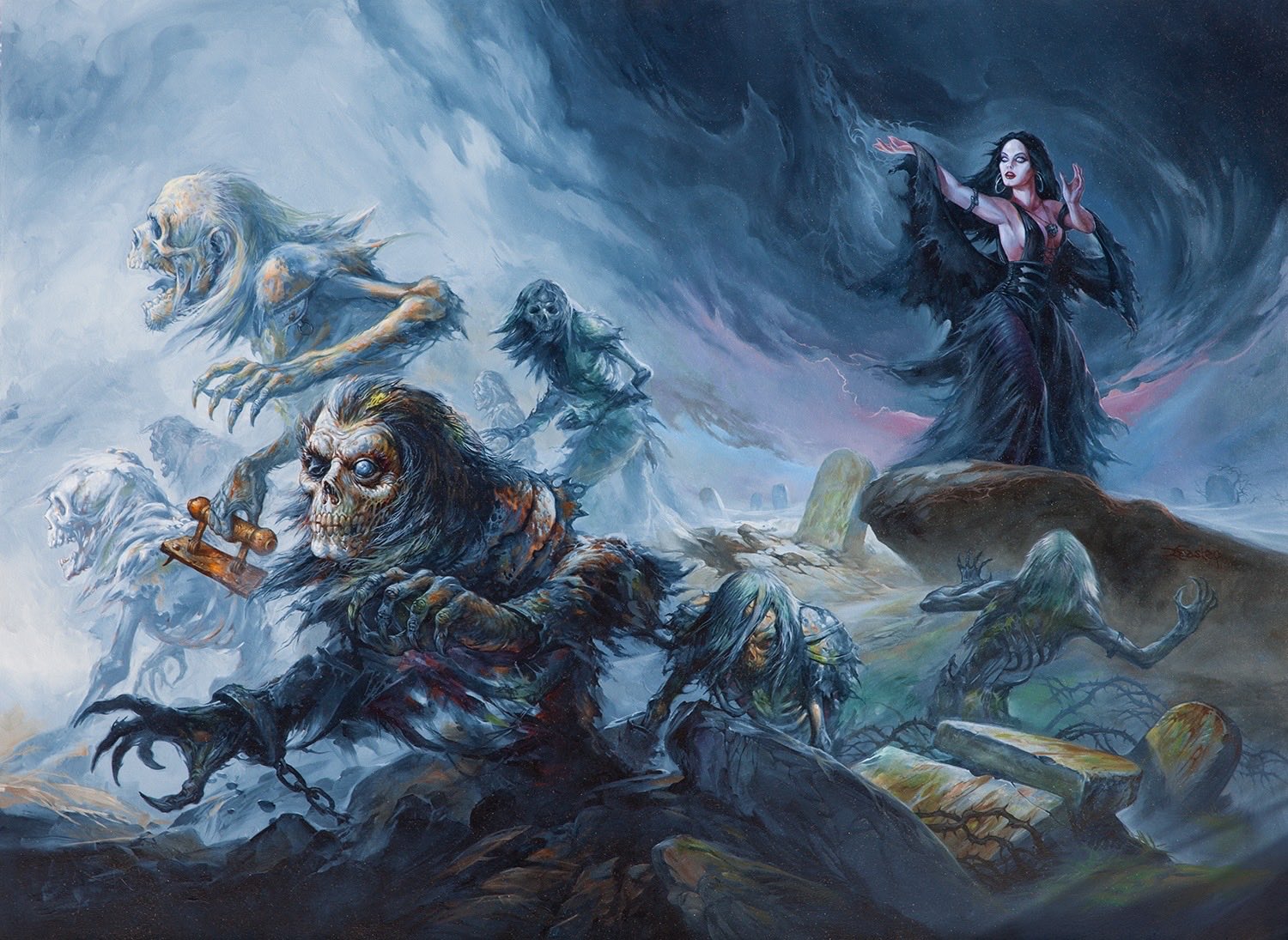
41 | Shalat (necromancer 3; 92.707)
40.
39.
Vermissa
38.
Talib
37.
Sarzec
36.
Plzentlos
35.
Kazerabet (Zaribel)
34.
Ellandra
33.
32.
31.
30.
29.
28.
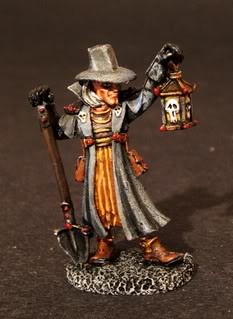
27.
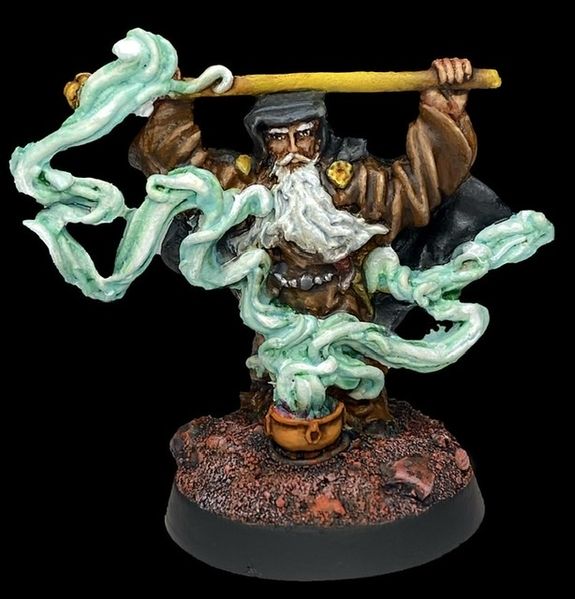
26.
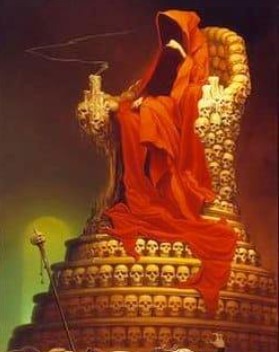
25.
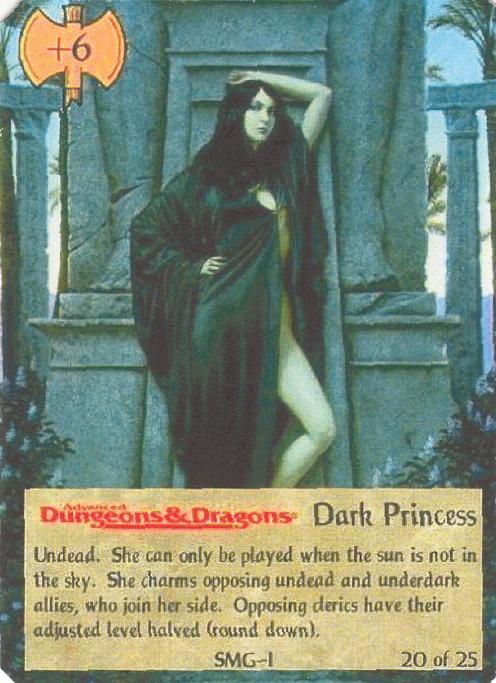
24.
22.
21.
20.
19.
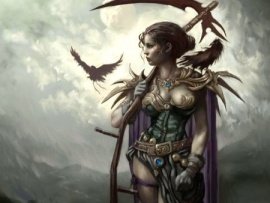
18.
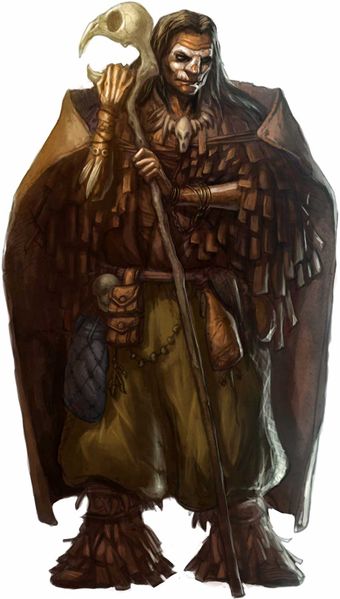
17.
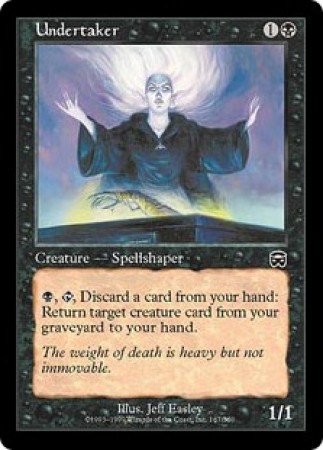
16.
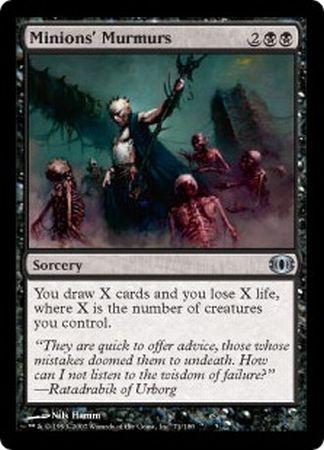
15.
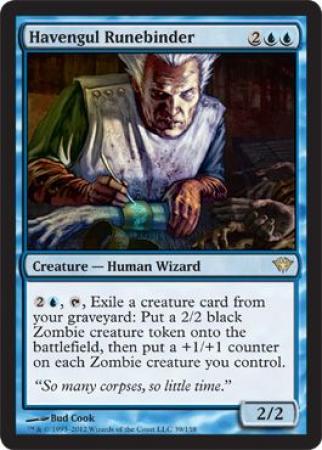
14.
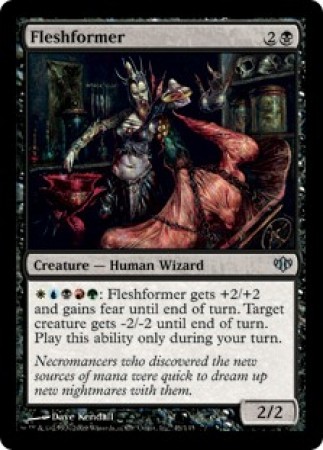
13.
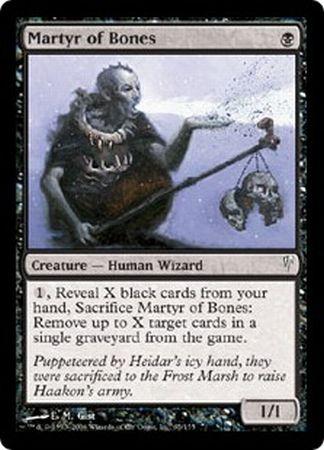
12.
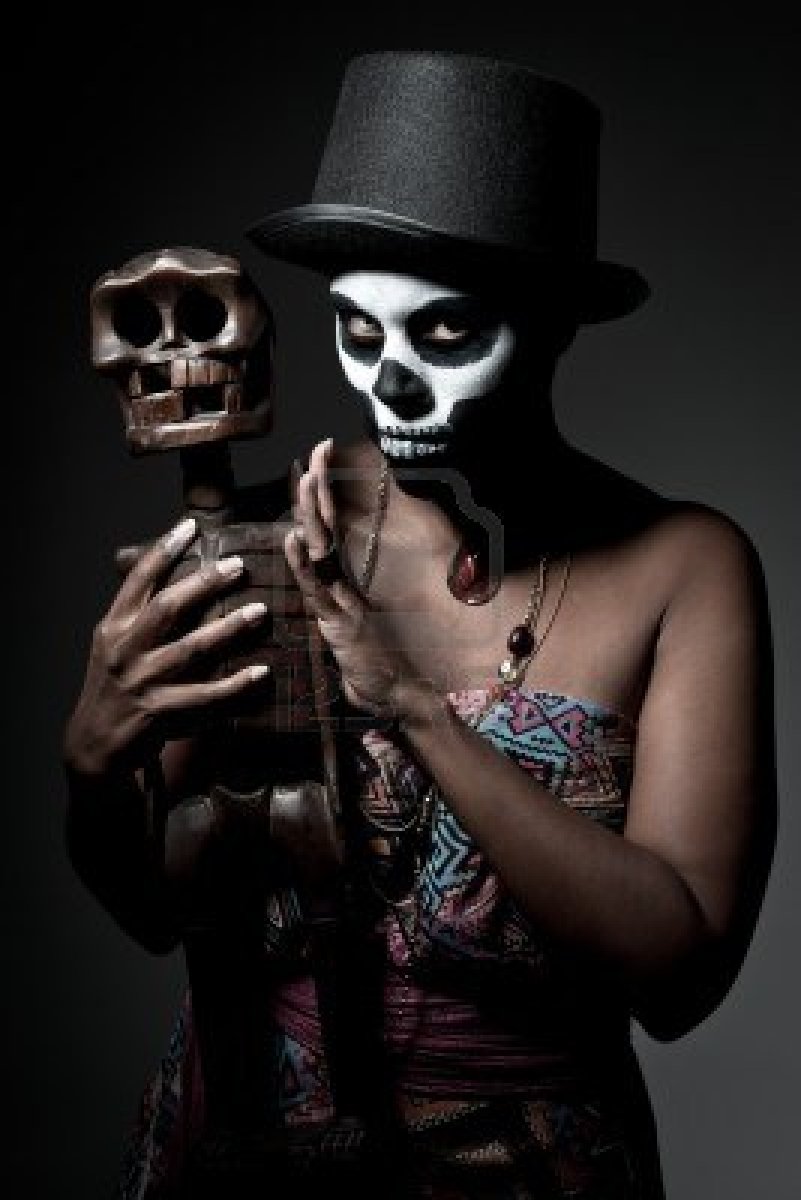
11.
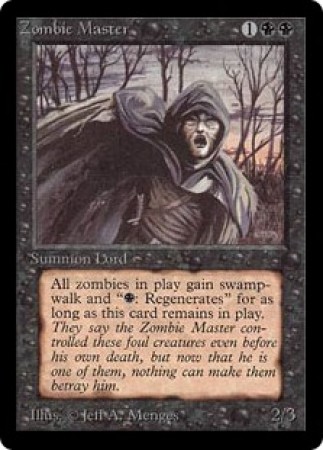
10.
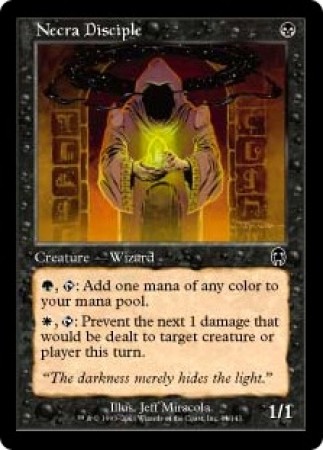
9.
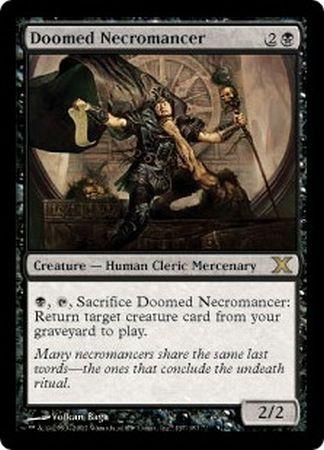
8.
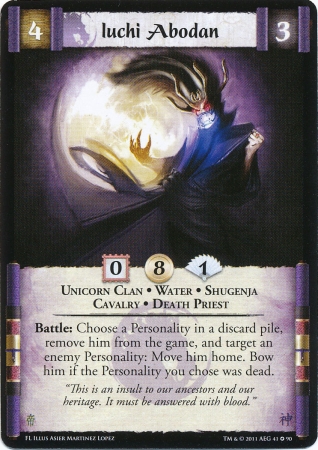
7.
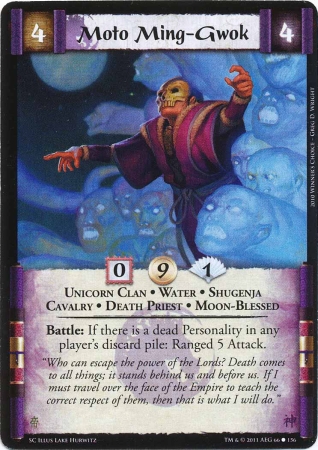
6.
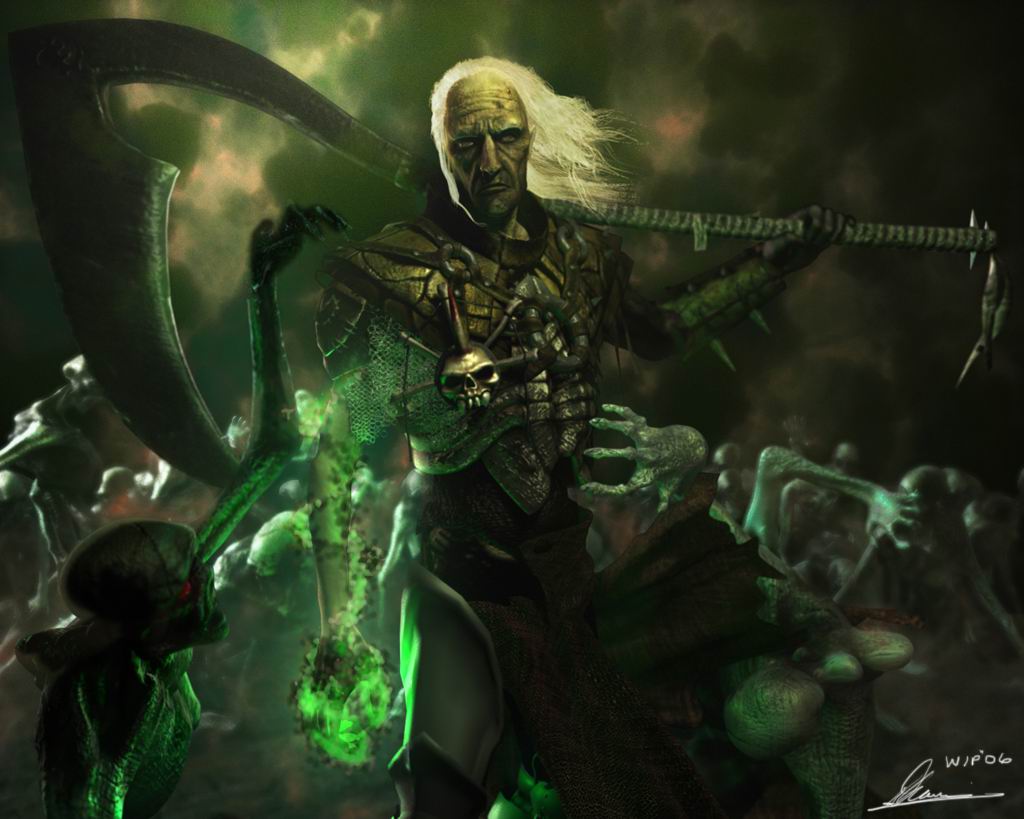
5.
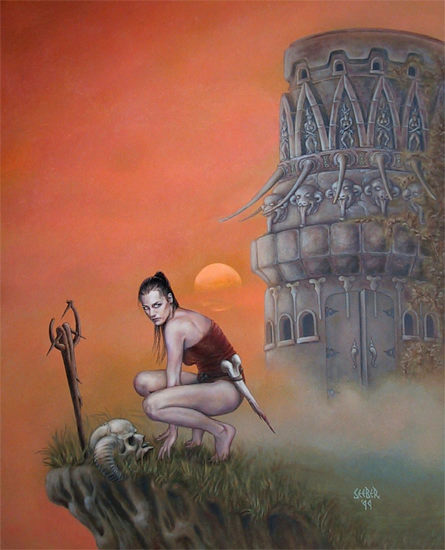
4.
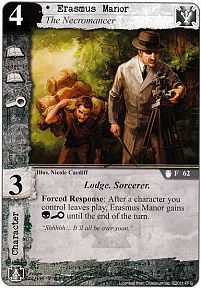
3.
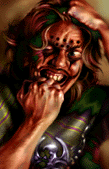
Xzar
CE human male
2.
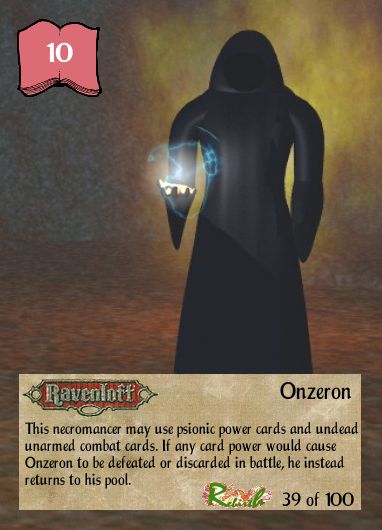
1.
